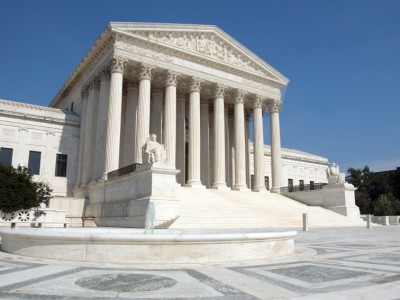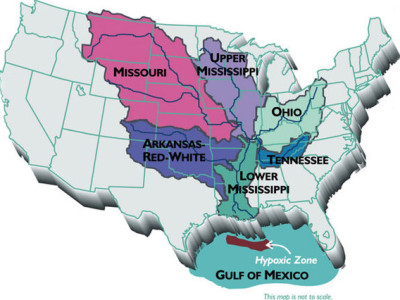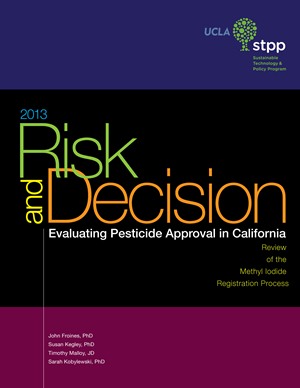Regulation
Supreme Court Grants Cert on One Aspect of Greenhouse Gas Emissions Suit
Court lets stand endangerment finding, rules regulating emissions from automobile tailpipes
This morning, the Supreme Court announced that it has granted six of the nine petitions challenging the D.C. Circuit Court of Appeals ruling upholding the Environmental Protection Agency’s rules regulating greenhouse gases under the Clean Air Act. The Court granted cert on only a single question (petitioners had raised a number of them): Whether EPA …
Continue reading “Supreme Court Grants Cert on One Aspect of Greenhouse Gas Emissions Suit”
CONTINUE READINGMass. v. EPA bears fruit for environmental petitioners
Court rules that EPA must decide if new water quality standars are needed to protect the Gulf of Mexico
Cross-posted at CPRBlog. A US District Court in Louisiana recently ruled, in Gulf Restoration Network v. Jackson, that EPA must decide whether it has to impose new water quality standards for nutrient pollution in the Mississippi River watershed. Although that might seem far afield from the Supreme Court’s greenhouse gas emissions decision in Massachusetts v. …
Continue reading “Mass. v. EPA bears fruit for environmental petitioners”
CONTINUE READINGHappy Birthday, TSCA!
With the Toxic Substances Control Act (TSCA) celebrating its 37th birthday today, I was thinking what we should get it as a birthday gift. Here’s one idea; how about a little respect. I’ve blogged before about how the statute has become one of the most denigrated environmental laws on the books. It seems that every …
Continue reading “Happy Birthday, TSCA!”
CONTINUE READINGThe Debt Ceiling and the Environment
The House GOP plans to require a rollback of environmental regulations as a condition for raising the debt ceiling. This would be a massive power-grab by the House at the expense of the President and the Senate.
It slipped under the radar screen due to all the furor over the impending government shutdown, but the NY Times ran an important article two weeks ago about the debt ceiling. The Republican plan is apparently to condition their agreement to raise the debt ceiling and save the country from default on a massive regulatory rollback. …
Continue reading “The Debt Ceiling and the Environment”
CONTINUE READINGU.C. DAVIS LAW SCHOOL CONVENES “ESA AT 40” CONFERENCE
U.C. Davis School of Law’s California Environmental Law & Policy Center to host major conference commemorating the 40th anniversary of the federal Endangered Species Act
This Friday, October 4th, the U.C. Davis School of Law’s California Environmental Law & Policy Center (CELPC) will convene a major conference commemorating the 40th anniversary of the federal Endangered Species Act. “The ESA at 40: Examining Its Past and Exploring Its Future” will bring to King Hall a broad array of ESA experts, including …
Continue reading “U.C. DAVIS LAW SCHOOL CONVENES “ESA AT 40” CONFERENCE”
CONTINUE READINGNew Chemical Regulations Go Live in California
Making Prevention Real?
Today, after years of discussions and drafts, California’s new Safer Consumer Product regulations take effect. They create a comprehensive chemicals regulatory scheme having three steps: identification and prioritization of consumer products containing chemicals of greatest concern (“product-chemical combinations”); performance of “alternative analyses” by the manufacturers of those high priority product-chemical combinations; and selection of regulatory responses …
Continue reading “New Chemical Regulations Go Live in California”
CONTINUE READINGEnvironmental Impacts of Fracking: Three Layers of the Onion
This summer, The Emmett Center at UCLA jointly sponsored with the Union of Concerned Scientists a two-day workshop on unconventional oil and gas production technologies, aka fracking: two days of expert working groups on science and risk assessment, law and regulation, and public information and engagement, followed by a public forum. The public forum was …
Continue reading “Environmental Impacts of Fracking: Three Layers of the Onion”
CONTINUE READINGPesticide Registration: Time for an Upgrade
UCLA Study Offers Recommendations to Improve the Pesticide Approval Process in California
We love our fresh fruits, vegetables and nuts in California. They are healthy for us and for our economy; California leads the nation with agricultural revenues of over 44 billion dollars annually, and produces nearly half of the fruits, nuts and vegetables grown in the U.S. But modern agriculture relies heavily on fumigants to produce this bounty …
Continue reading “Pesticide Registration: Time for an Upgrade”
CONTINUE READINGCEQA reform turns into another special-interest exemption
Overall, this is a step back for CEQA reform.
Ethan recently noted the possibility of CEQA reform that might actually make sense: Reducing the focus on aesthetics and traffic in infill developments (which can result in worse environmental outcomes!), ongoing monitoring of impacts of projects after the CEQA process is completed, and providing some transparency in the CEQA litigation process. (Though I still think …
Continue reading “CEQA reform turns into another special-interest exemption”
CONTINUE READINGNew Report Released Today on Electric Vehicle Deployment in Hawaii
Hawaii may be a paradise, but not if you’re driving a fossil fuel car and getting all of your electricity from the grid. The state has the highest gas and electricity prices in the nation, burning imported fossil fuels and costing residents dearly. Yet Hawaii has abundant renewable resources, from solar to wind to geothermal. …
Continue reading “New Report Released Today on Electric Vehicle Deployment in Hawaii”
CONTINUE READING







